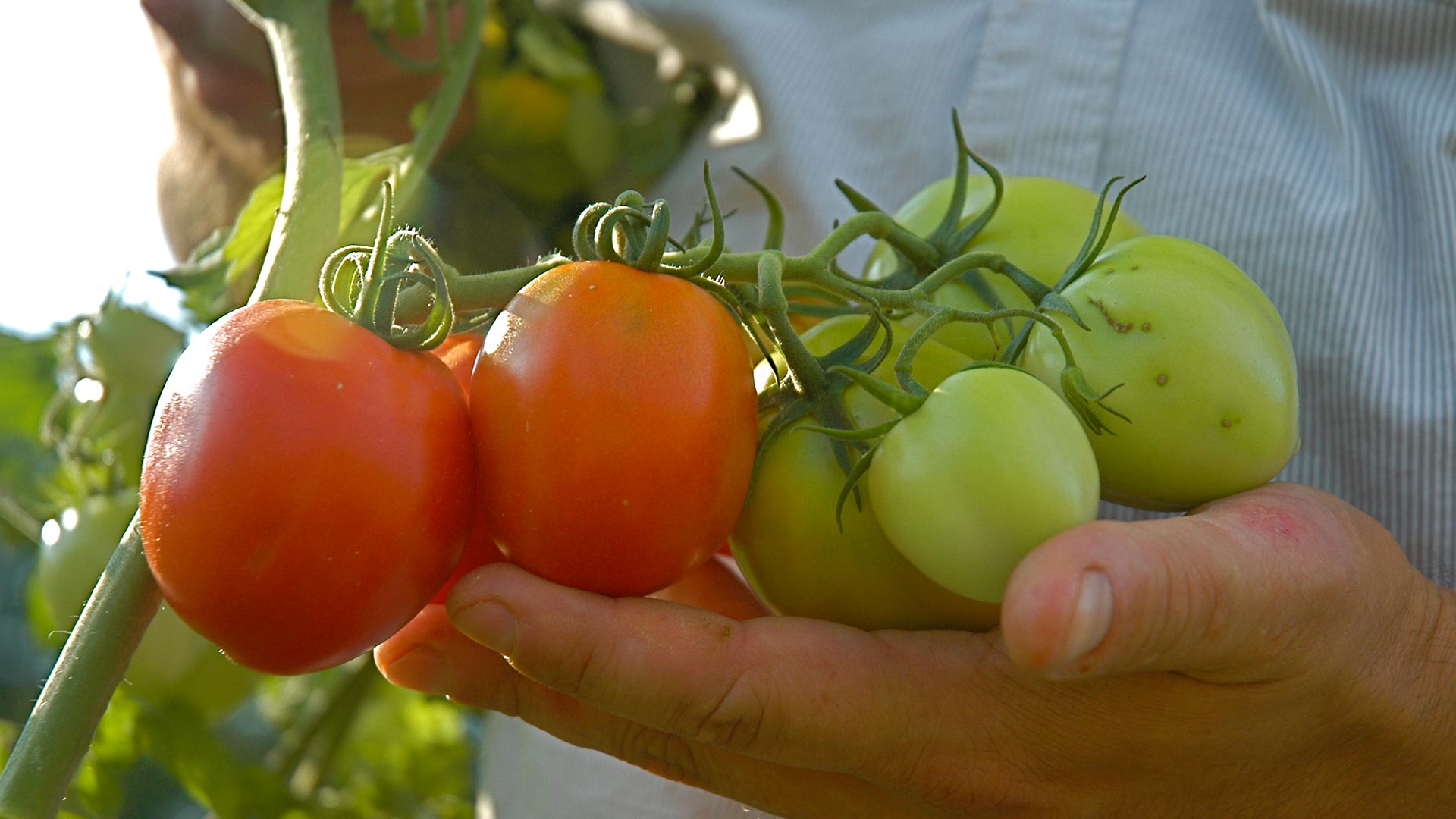In the face of climate change, engineering genetic modifications into new crops will ensure future food supplies.
When you bite into an ear of fresh corn, you are eating something profoundly unnatural. A modern ear is a big, flavorful vegetable packed with 18 rows of plump kernels. Its sad-looking wild ancestor had just six to eight rows of kernels, looking more like something one might weed out of the lawn. The juicy version on the grill today is the result of thousands of years of breeding and selection. The same is true for almost every modern crop. They have been genetically modified over and over to feed an ever-growing, urbanized population.
We missed the chance to stop climate change, but Lippman believes we can still win the race to remake agriculture and safeguard the food supply for humankind.
Now we need to remake our crops yet again. The old strategies for improving size and yield are no longer enough. A couple of centuries of human greenhouse emissions have caught up with us. The world is likely to get at least 2 degrees Celsius warmer, on average, by the middle of the century. With extreme storms, rains, and drought already happening more frequently, growing conditions are changing faster than farmers and their crops can adapt. Zachary Lippman, a professor of genetics at Cold Spring Harbor Laboratory (CSHL), likens the situation to an arms race—only this time around, we are competing against ourselves.
The climate change arms race
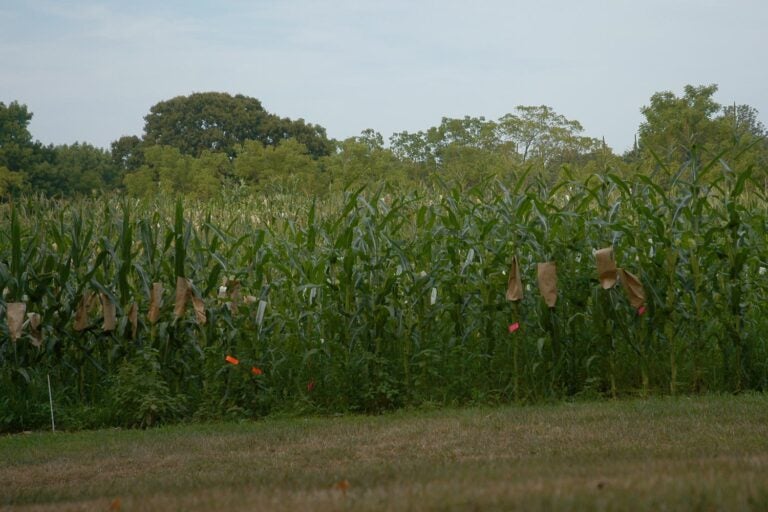
Agribusinesses like Cargill and Archer Daniels Midland are aware of the battle and mostly betting that improved crop breeding using the latest genetic engineering techniques will save the day. Lippman doubts that will be enough. “Winning the climate-change arms race is going to be extremely challenging,” he says. Continuing to fine-tune the traits of existing crops, making them even more specialized, could only make the challenges greater. Modern agriculture needs to address one of its fundamental weaknesses: an extreme reliance on just a handful of genetically non-diverse crops, notably corn, wheat, rice, and soy.
Solving the food-and-climate crisis will require going back to basics to make more crops more genetically diverse. “We need to think about how domestication worked in general, thousands of years ago,” Lippman says. Back then, early crops were taken out of their original geographical range and grown in new places because farmers selected for mutations that allowed adaptations to occur. Today’s challenges are adding overlooked crops to the mainstream food supply and broadening the agricultural gene pool. These adjustments will give farmers options to plant crops suitable for the extreme growing conditions they are likely to encounter in the coming decades.
“We haven’t done a very good job of maximizing diversity,” Lippman says. “And diversity is what you need to win the battle of climate change.”
Embracing orphan crops
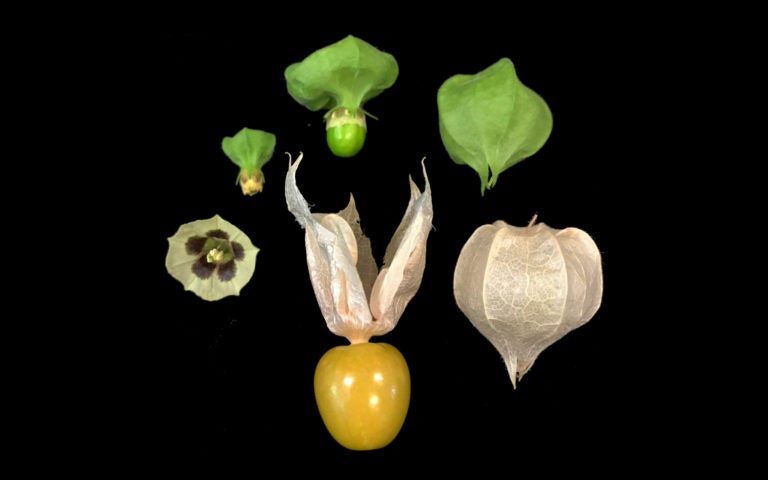
Today, agricultural alternatives already exist in the form of orphan crops: ones that are cultivated on a small scale in some parts of the world. Some of them are already suited to relatively hot or dry conditions. However, because they have not gone through the same extensive breeding as corn, soy, and wheat, the orphans have more untapped potential.
The first hurdle to embracing orphan crops is identifying and focusing on the most promising ones. Quinoa is a prime example. It was consumed for thousands of years in the northern Andean region of South America but was little known beyond there. In the 1980s, it began to attract attention as a healthy traditional grain, benefiting from extensive research and marketing. It is now becoming mainstream; global production more than tripled, to 230,000 metric tons, between 2009 and 2019.
Many other orphan crops could become increasingly important as climate change destabilizes the existing system of agriculture. Lippman’s research group at CSHL is investigating the Solanaceae family, a diverse group that includes tomatoes, potatoes, eggplants, and peppers. At least 25 orphan crops exist in this family. Lippman is particularly interested in the domesticated African eggplant and an uncultivated wild relative, Solanum anguivi. Only local communities eat these species because there hasn’t been much interest in developing them into mainstream food crops. “There are dozens of Solanaceae plants that have more widespread agricultural potential than we currently realize,” Lippman says.
Flower power
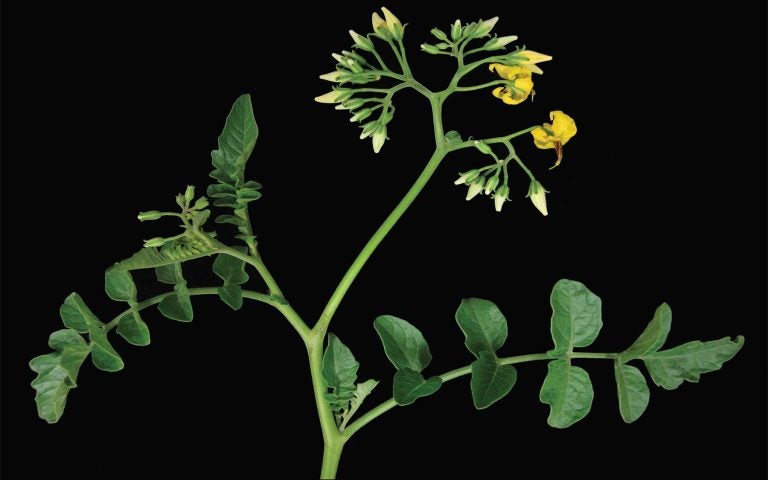
Working with plant biologist Yuval Eshed of the Weizmann Institute of Science in Israel, Lippman has studied domestication genes in tomato plants. By altering the same genes across different plant lineages, they and other researchers have found that domestication produced beneficial effects. The set of genes associated with the domestication of many crops direct the production of two key hormones, florigen and anti-florigen. These hormones control the timing of flowering and how many flowers are made on each plant, as well as the growth and branching of plant stems. Recent discoveries suggest that focusing on this handful of genes could accelerate the improvement of orphan crops, or even enable the de novo domestication of wild plants that have crop potential. Eshed and Lippman are enthusiastic about orphan legumes, such as the drought-resistant chickpea, that have great potential for wider cultivation. Teff, a hardy, protein-rich cereal grown in Africa, is another orphan crop whose production could be vastly expanded.
Lippman suggests thinking as if society is starting modern agriculture all over again from scratch. “We can focus our attention on the genes and families of genes that have been shown over history to have been the most important ones for driving the trait changes that give us the type of agriculture that we have today,” he says. “Of course, there are so many more changes in other genes that were also important and also need to also be considered, but certain gene families stand out.”
Throughout most of history, farmers were already modifying florigen-regulating genes, with no awareness of what was happening at a molecular level. In recent years, breeders have repeatedly used this method in crops like tomatoes, soybeans, potatoes, beans, strawberries, barley, sugar beet, rice, and wheat. Control of flowering is critical because the flowers become fruit, and the timing determines the length of the growing season and the harvest. Biologist Akiva Shalit-Kaneh of the Technion-Israel Institute of Technology, working with Eshed and others, finds that florigen and anti-florigen also influence stem growth patterns. Tubes in the stems that pump water and nutrients throughout the plant grow and mature in parallel with the process of flowering. This co-regulated growth by florigen and antiflorigen shows that their associated genes can improve crops in other ways.
Can crops keep up with climate change?
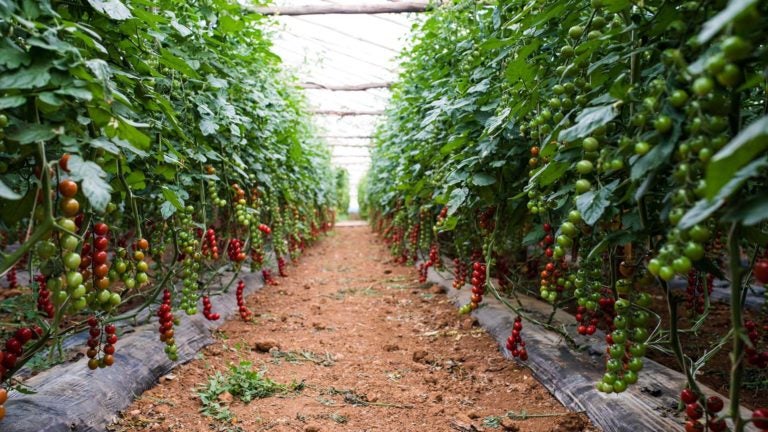
Instead of waiting for spontaneous beneficial mutations to arise, the idea is to speed things up by using CRISPR gene editing. CRISPR can create variations at the locations in the genome that code for florigen and anti-florigen to essentially induce diversity on demand. Increased genetic diversity at these targeted regions of the genome would enable a wider range of adaptations to a changing climate. Plant breeders can use this broadened genetic palette, in combination with already existing genetic variations, to select plant varieties best suited to particular growing conditions, such as increased heat, more frequent drought, or high salinity.
A group led by Lippman and postdoctoral fellow Choon-Tak Kwon has done exactly that with tomato plants. Working with colleagues in Korea, Israel, and elsewhere in the U.S., the researchers have gene-edited tomatoes to flower more quickly and grow shorter stems. These compact plants are suitable for urban agriculture—another promising response to the limits of current agriculture. Producing and distributing food within densely populated areas avoids the high energy and transportation costs of industrial farming. It can also increase food security in communities that don’t have easy access to fresh produce. In another study, Lippman’s group engineered 30 gene variants in a tomato to modulate the fruit’s size and weight.
The gene-editing tool is a means for us to walk side by side with what nature has already given us, and aid it along.”
Zach Lippman
In principle, these same genetic tuning techniques can now be applied to other members of the Solanaceae family, transforming less-familiar plants into useful new crops. Although the CRISPR approach is cutting-edge, the genetic mechanisms it activates are the same ones that plant farmers have been manipulating for thousands of years. These are the same mechanisms that the plants themselves have evolved over tens of millions of years of natural selection. “We need to bow down in respect and nod to nature, and how breeders work with what nature provides,” Lippman says. “The gene-editing tool is a means for us to walk side by side with what nature has already given us, and aid it along.”
How can obscure crops go mainstream?
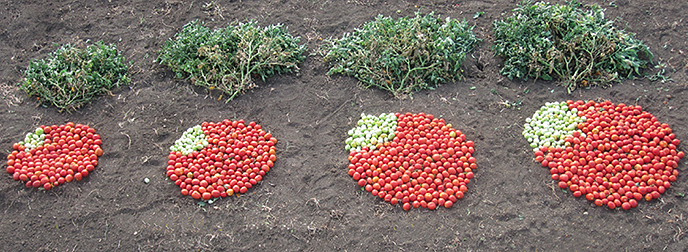
Identifying and improving orphan crops is just one part of the effort to change global agriculture. Agribusiness is a $1 trillion industry in the United States alone. Corporate farms have little incentive to do labor-intensive tinkering of new varieties since their profits depend almost entirely on just a few crops. American fields are less diverse today than they’ve ever been, as companies focus on growing corn and soybean. According to the United States Department of Agriculture, those two crops alone account for 180 million acres of planting in this country. Turning away from mainstream crops to develop obscure new varieties “is not something that private companies will jump on if there’s no financial incentive there,” Lippman says.
Aubrey Streit Krug, director of ecosphere studies at the Land Institute in Kansas, sees a connection between climate adaptation, economics, and culture. Real change will have to involve all of those factors. “Agronomically, we have to know how to farm these plants, how to grow them well for high yield, how we relate to them and manage them,” she says. Farmers will have to learn how to grow and manage the new crops, and consumers will have to want to eat them. Fortunately, the produce shelves in the supermarket today look quite a bit different than they did a few decades ago, with quinoa and kale sitting next to white rice and iceberg lettuce. This indicates such cultural transformations are possible.
Krug’s colleague Lee DeHaan, lead scientist of the Kernza wheatgrass domestication program at the Land Institute, expands on that point. “Genome editing technology by itself will do nothing. It has to live within the context of all this other stuff—traditional plant breeding and all the other work that needs to be done to develop new crops, including food science and agronomy and societal changes,” he says. There’s no reason that farmers on all scales, from small plots to giant agribusinesses, can’t adopt those changes, as long as they have an incentive to do so.
In Lippman’s view, climate change may starkly expose the costs of not changing, thereby incentivizing agribusinesses to change. Enhanced, specialized versions of today’s large-scale, single-crop agriculture could leave farms increasingly vulnerable to an economic catastrophe. It is impossible to predict how the climate will change locally, and it is also difficult to reliably predict how engineered plants will respond to unforeseen growing conditions. However, if Lippman and the other crop-diversity evangelists are successful, farmers will have already shifted direction as insurance against such eventualities. Ideally, they will embrace both orphan crops and more robust, less-specialized versions of the current staples.
The next agricultural revolution
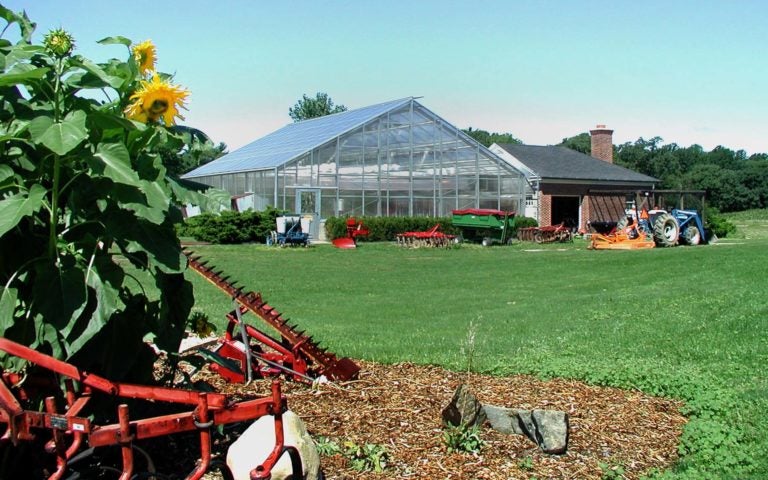
In a recent Science review paper, Lippman and Eshed examine the different ideas being proposed to feed humanity on a hotter, more crowded planet. “The two main strategies are improvement and further adaptation of the major crops that already benefit from large-scale infrastructure developed around them, and the diversification of agriculture by developing new crops that would better fit climatic changes and address nutritional needs,” the authors write. Genome modifications that focus on the florigen system—the same genetic system that led to many of the crop improvements in the history of agriculture—“may yield the greatest return for crop improvement,” they conclude.
As much as today’s sweet corn is an improvement over its maize ancestor, the supermarket shelves of tomorrow could be a vast advance beyond what exists today. Meat, a major contributor to climate change, is likely to be less common. Foods made from protein-rich cereals and legumes are likely to be a lot more so. Items that now seem exotic, like teff and African eggplant, may become utterly mundane. But the most significant change will be mostly invisible: future crops will be better prepared for a changing world.
Using CRISPR and associated gene-editing tools, along with still-untapped natural gene variations, breeders will reverse the centuries-long pattern of increasingly specialized, vulnerable corn, rice, wheat, and soy. The strains that replace them will look visually similar, but they will have their distant ancestors’ long-lost adaptability. Former orphan crops will share a similar hidden secret. They, too, will be the beneficiaries of CRISPR editing—in this case, used to create larger, tastier, more nutritious variants in just a couple of generations, rather than the dozens or hundreds required by traditional breeding. We missed the chance to stop climate change, but Lippman believes we can still win the race to remake agriculture and safeguard the food supply for humankind.
Written by: Viviane Callier, Science Writer | publicaffairs@cshl.edu | 516-367-8455
